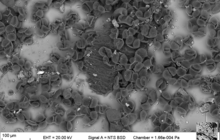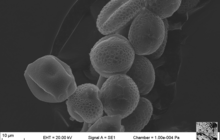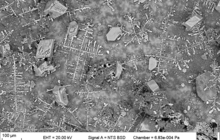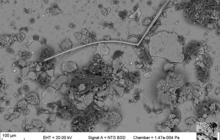Environment: Scanning Electron Microscopy of dust precipitations
Within the context of an examination of the precipitation of dust at the months January to June, we were retained to characterize immission samples, but also contemplable emission sources, by scanning electron microscopy. At it, the focus was laid on the composition of the deposited dust. As main constituents plant remains (timber, leaves, grasses), insects, pollen, lignite particles, mineral phases, ash/fly ash bullets, fibers (textile fibers, glass fiber, etc.), gypsum, salt and others, like resin or synthetics (foil, plastics, etc.), were identified. Particularly distinct emerge the seasonal differences. While crystallization of salt occurs in winter, emitted due to increasingly road salt use, the amount of pollen increased in spring expectably, reaching its climax in May. Even an increased activity in agriculture could be detected. Here, the amount of mineral phases (quartz, feldspar, mica) increased.
project overview
- Disposals by the wayside
- Deposits in systems of industrial facilities
- Analytics of fibers
- Microscopic analysis of construction material
- IHS-Cinder-Conditioning
- Seam anomaly in the open-pit mine Welzow-Süd
- Sediment petrographic investigation of the Meuro Formation
- Scanning Electron Microscopy of dust precipitations
- The "Venus" vom Hohle Fels
- Investigation of corrosion in plant engineering and construction
- Study of clinker formation in power plant processes
- Survey of geological structures using GPS
- Maceral analysis and microscopic evaluation of peat samples
- Evaluation of a coal seam sequence in the surface mine V. Schleenhain
- Coal quality treatments
- Faciel correlation of archeological findings
- Mapping of sulfur content
- QMAT
- Study of selected section areas of the exploratory drilling in the forefield of the surface mine Jänschwalde
- Xylite classification
- Cuticular analysis



